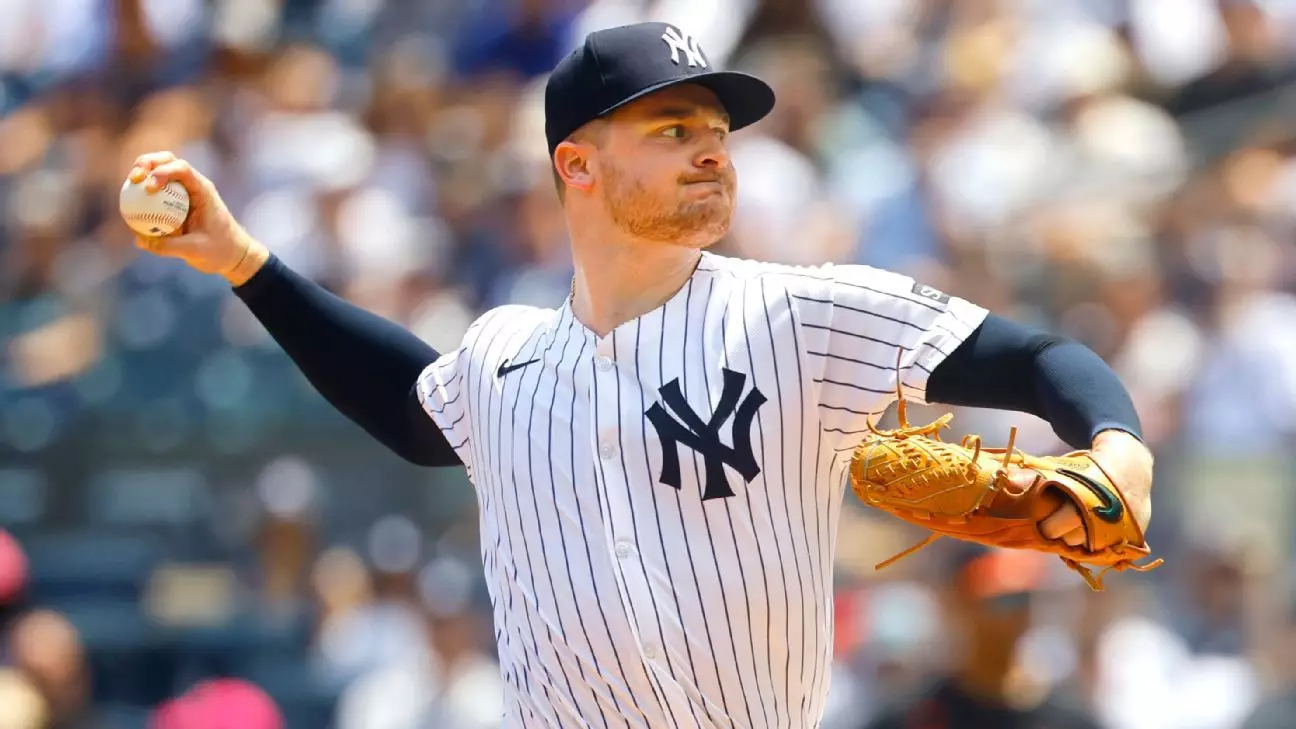The news surrounding Clarke Schmidt’s impending Tommy John surgery serves as a glaring symbol of the broader fragility within the Yankees’ pitching staff. For a team that once boasted deep reserves and high hopes for sustained success, the recurrence of injuries underscores a troubling pattern. Schmidt, a promising outsider turned starting pitcher, had shown flashes of brilliance, demonstrated particularly through a 3.32 ERA in 14 starts. Yet, his injury exposes not only his personal vulnerability but also the systemic issues that have plagued New York’s rotation this season.
This deep bench of talent is belied by the alarming frequency of injuries—Gerrit Cole’s earlier Tommy John surgery, Luis Gil’s delayed season due to a lat injury, and Ryan Yarbrough’s oblique strain—highlight a vicious cycle of setbacks. The Yankees have failed to create a resilient infrastructure capable of absorbing such blows. Each injury doesn’t merely sideline a player; it chips away at the team’s competitive edge. This predicament raises uncomfortable questions about how the franchise has managed development, workload, and the physical maintenance of its pitchers.
Management’s Response: A Mix of Optimism and Frustration
The Yankees’ managerial stance, notably Aaron Boone’s comments, oscillates between pragmatic optimism and restrained concern. Boone describes Schmidt’s condition as “pretty much inevitable,” a phrase that reeks of resignation rather than strategic foresight. His acknowledgment that Schmidt’s injury “not great news” reflects the harsh reality that a critical piece of their starting rotation is nearly lost. Yet, Boone’s tone also conveys an underlying frustration—an acceptance that the Yankees are no longer reaping the benefits of their investment in young talent.
Boone’s decision to explore options both internally and externally points to a broader acknowledgment that the team’s current roster is insufficient. The reliance on veterans like Carlos Carrasco and Allan Winans, who have limited recent success or experience, is symptomatic of a broader failure in scouting and player development. The promotion of prospect Cam Schlittler hints at some hope for the future, but it doesn’t address the pressing need for a veteran presence who can reliably anchor a shaky rotation.
The Frustration of Missed Opportunities and Questionable Strategy
The Yankees’ approach to pitching management appears to be reactive rather than proactive. The recurrence of injuries, especially to pitchers like Gerrit Cole who underwent Tommy John surgery at the start of the season, signifies a lack of foresight and sustainable training strategies. The reliance on internal options such as Yarbrough, who is still recovering, and the unproven Schlittler, underscores a desperation that could have been mitigated had the franchise taken more calculated steps earlier.
The looming July 31 trade deadline will bring its own set of challenges and frustrations. The Yankees are expected to scour the market for reinforcements, but this band-aid approach simply masks deeper flaws. The question remains: Has the organization been too fixated on short-term fixes at the expense of a comprehensive rebuild? The current rotation, defined more by necessity than by strategy, is vulnerable at best and catastrophic at worst.
Furthermore, the injury landscape exposes a fundamental flaw—an inability to develop pitchers who can withstand the rigors of Major League Baseball without succumbing to injury. It reflects poorly on the Yankees’ medical staff, conditioning programs, and overall player management. The sheer number of starters on the injured list in a single season is inexcusable and highlights a systemic failure to prioritize long-term health over quick wins.
The Broader Implications: A Franchise at a Crossroads
This injury crisis, amplified by the potential loss of Schmidt, is more than just a frustrating chapter in a tumultuous season. It underscores a philosophical question about the franchise’s future direction. The Yankees have often been accused of balancing tradition with a relentless pursuit of championship glory. However, in their current state, it appears that they are sacrificing long-term stability for short-term fixes.
The team’s decision-making, both at the management level and on the field, seems hamstrung by anxiety over immediate results rather than a thoughtful strategic plan. The reliance on trade deadline acquisitions rather than nurturing homegrown talent and the apparent lack of a robust injury prevention program reflect a reactive rather than proactive approach.
Ultimately, the Yankees stand at a critical juncture. If they fail to address these systemic vulnerabilities — which have already cost them dearly this season — they risk perpetuating a cycle of missed opportunities and underachievement. Schmidt’s torn ligament isn’t just a personal tragedy; it’s a mirror reflecting a franchise that needs to fundamentally reassess how it manages player health, development, and resilience in the modern game.

